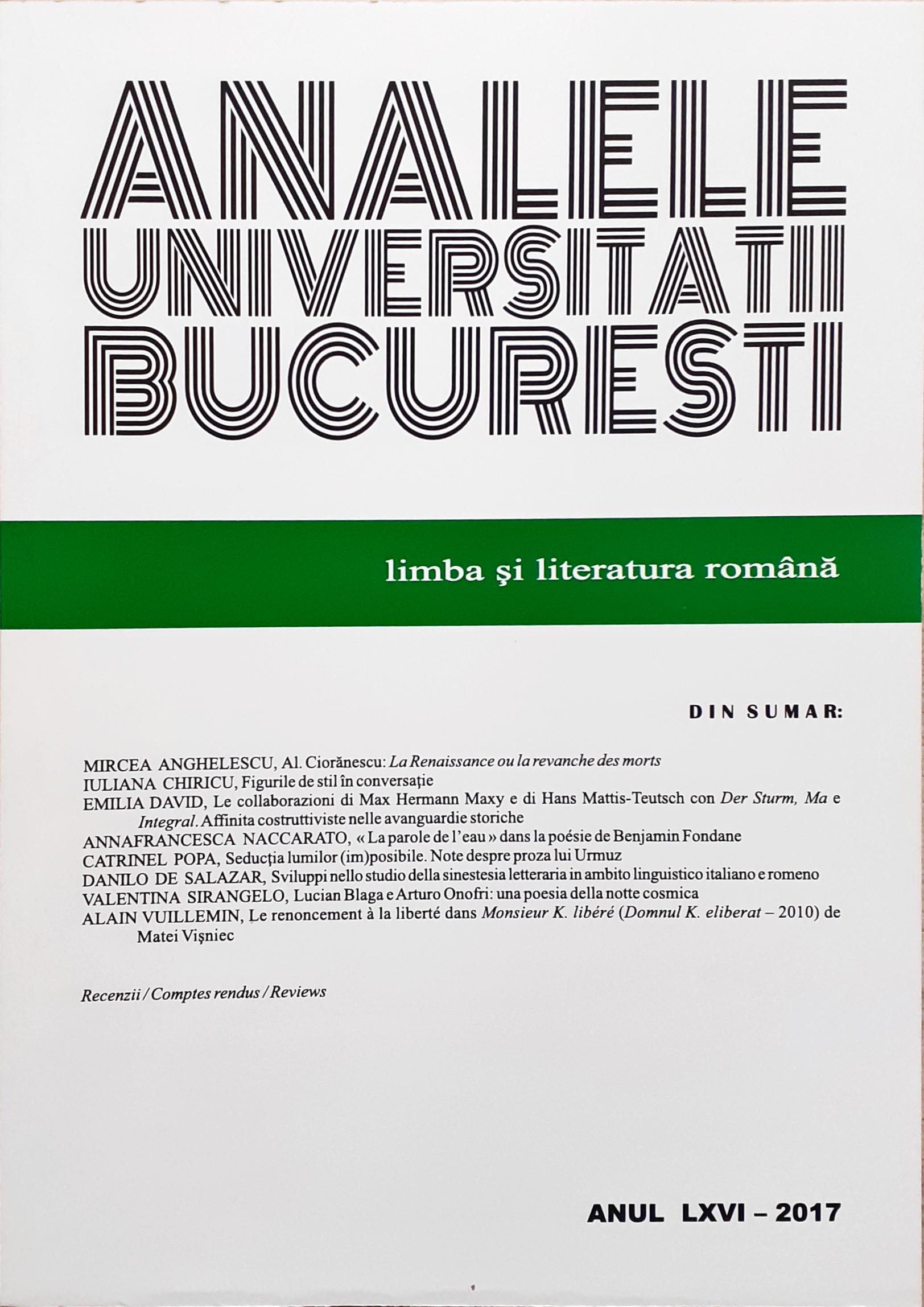
We kindly inform you that, as long as the subject affiliation of our 300.000+ articles is in progress, you might get unsufficient or no results on your third level or second level search. In this case, please broaden your search criteria.

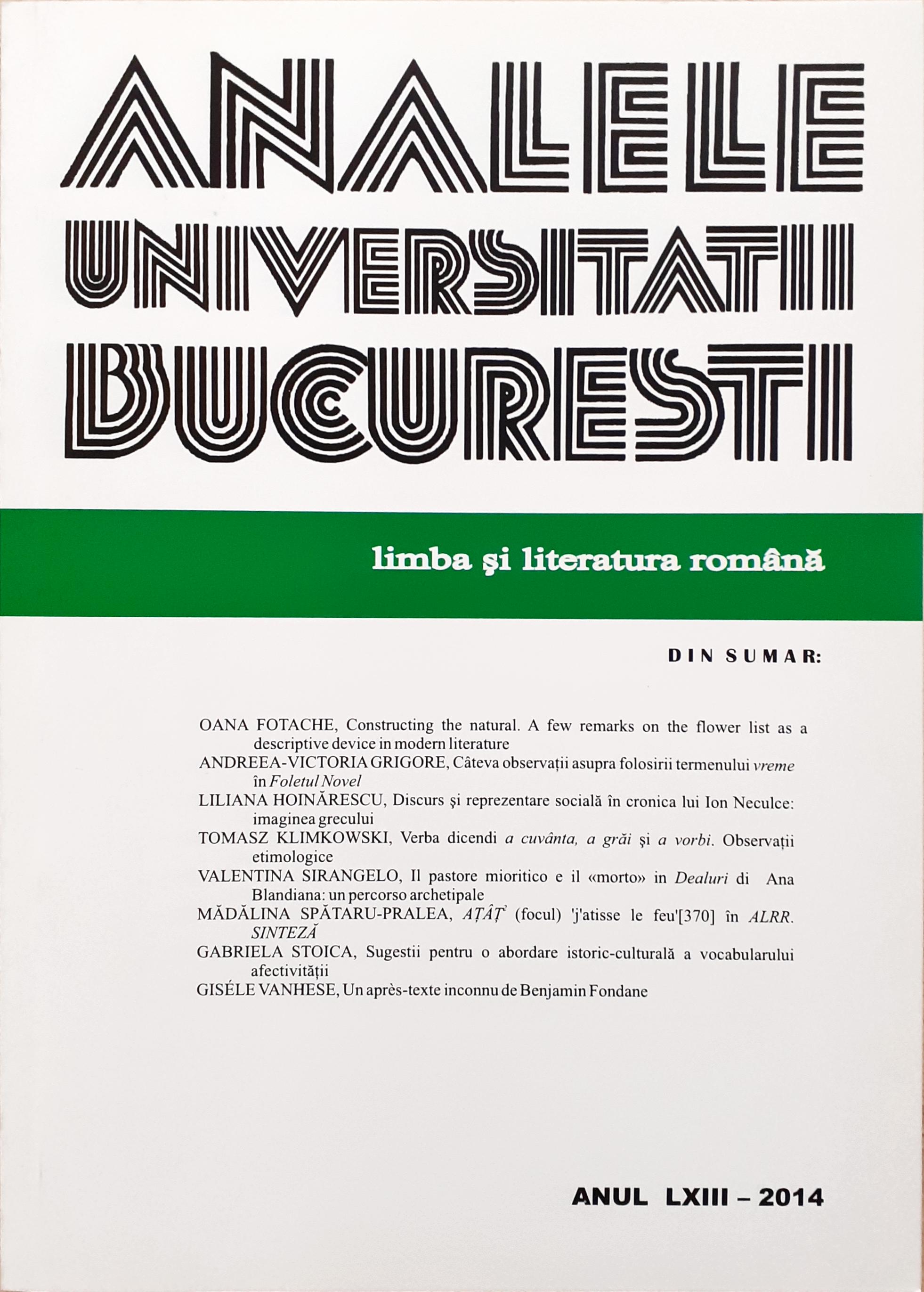
This paper analyses the etymology of the Romanian verbs with the meaning ‘to speak’: "a cuvânta", "a grăi" and "a vorbi". We discuss the origin of a cuvânta, a Balkan Romance word derived from "cuvânt" ‘word’, with parallels in other Balkan languages, especially in Albanian, Macedonian and Serbian, and of the Slavic borrowing "a grăi", which changed its meaning from ‘croaking’ to ‘speaking’. However, we focus on the origin of the verb "a vorbi", which has not been satisfactorily and fully explained until now. We reject the older hypothesis that sustains it was formed on the basis of the noun "vorbă", a variant of the Slavonic borrowing "dvorbă". We try to demonstrate that it should be regarded as a phonetic variant of the older form "a vorovi", which meant intially ‘to make noise’, but is attested with the meaning ‘to speak’ since the 16th century. Most probably, the verb "a vorovi" represents a contamination between two verbs that reproduce the Balkan Slavic verbs "govoriti" and "vreviti", both of them meaning ‘to make noise’.
More...
The article discusses the 62 words coined, according to DEX (Dicționarul explicativ al limbii române), by contamination (Ro. contaminare), a special type of lexical blending. However, at a closer look, 25 words seem to have other etymological interpretations. The remaining 37 blends are analysed in an attempt to find the succesful blending patterns, since these patterns seem to be language-specific.
More...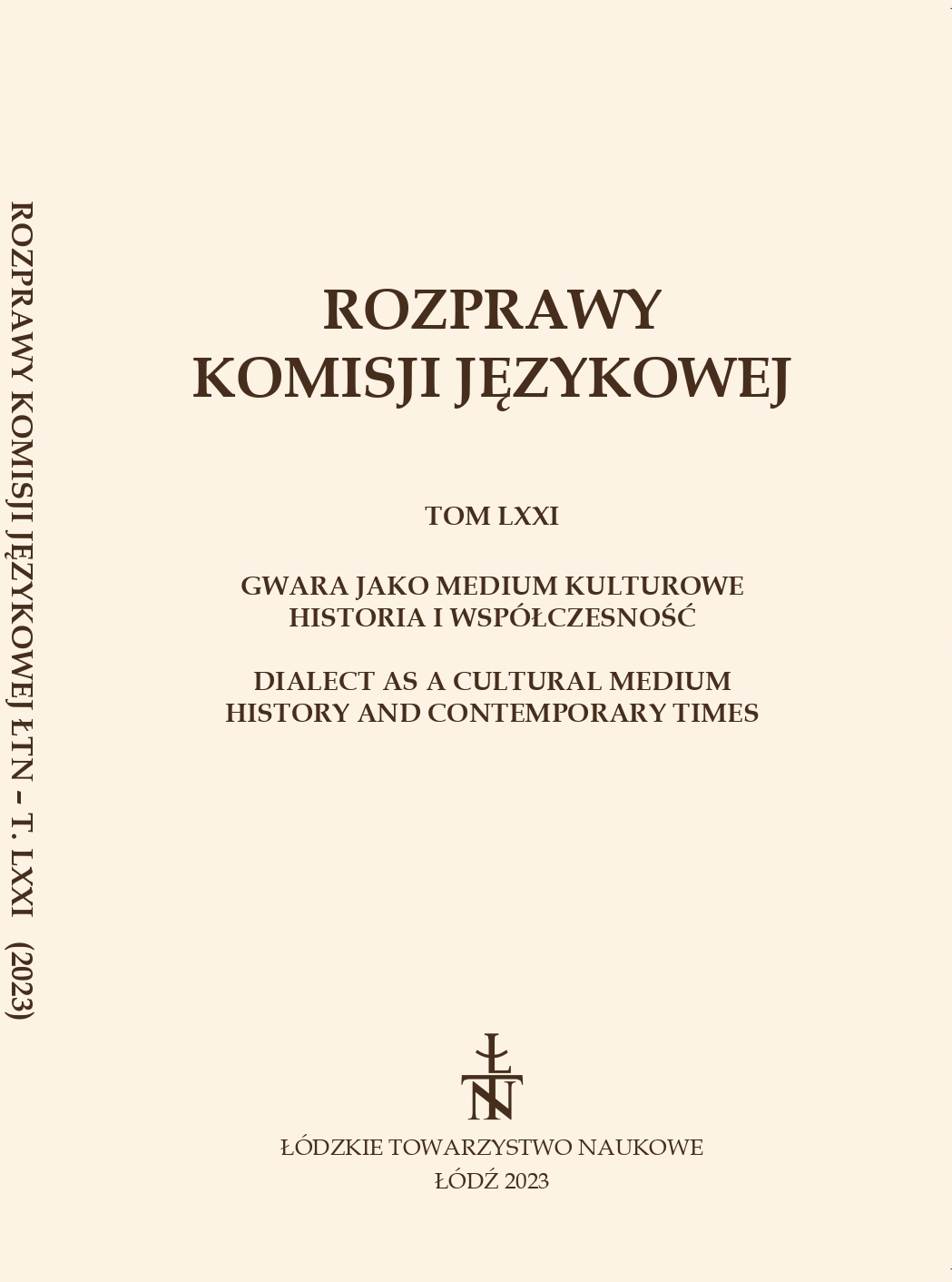
The article presents the basic theoretical principles of the interpretation of the term concept and attempts to reformulate it in relation to views of contemporary researchers. The main principles of anal-ysis of the concepts are outlined. The paper offers an analysis of the concepts of UP / DOWN, whichrepresent verbalisation of spiritual culture concepts (the triad heaven – earth – hell). The concept UPis represented by names associated with heaven (гóри небéсні, горá госпóдня, горíшне, гóрницяСіóнська), the concept DOWN is associated with earth (діл земни ́й, доли ́ на світовá, долище,межигори земнí, падíл зéмний, падóлок, юдóль) and hell (діл, долище пресподнє, доли ́ на пéкла,преспóдня). On the basis of this, the research made it possible to establish two semantic oppositions:heaven / earth and heaven / hell. An analysis of dialectal and historical materials allowed the au-thor to present the structural-semantic units that form the nominal field of the concepts UP / DOWN.The subject of the study was systematically presented at the supradialectal level, the singularitiesof the representation of concepts in Ukrainian dialects were explained, and their territorial variationwas revealed. Emphasis is placed on the importance of the study of dialect material, as it is the studyof dialects that allows the reconstruction of fragments of the dialect image of the world which havenot been verbalised in literary language.
More...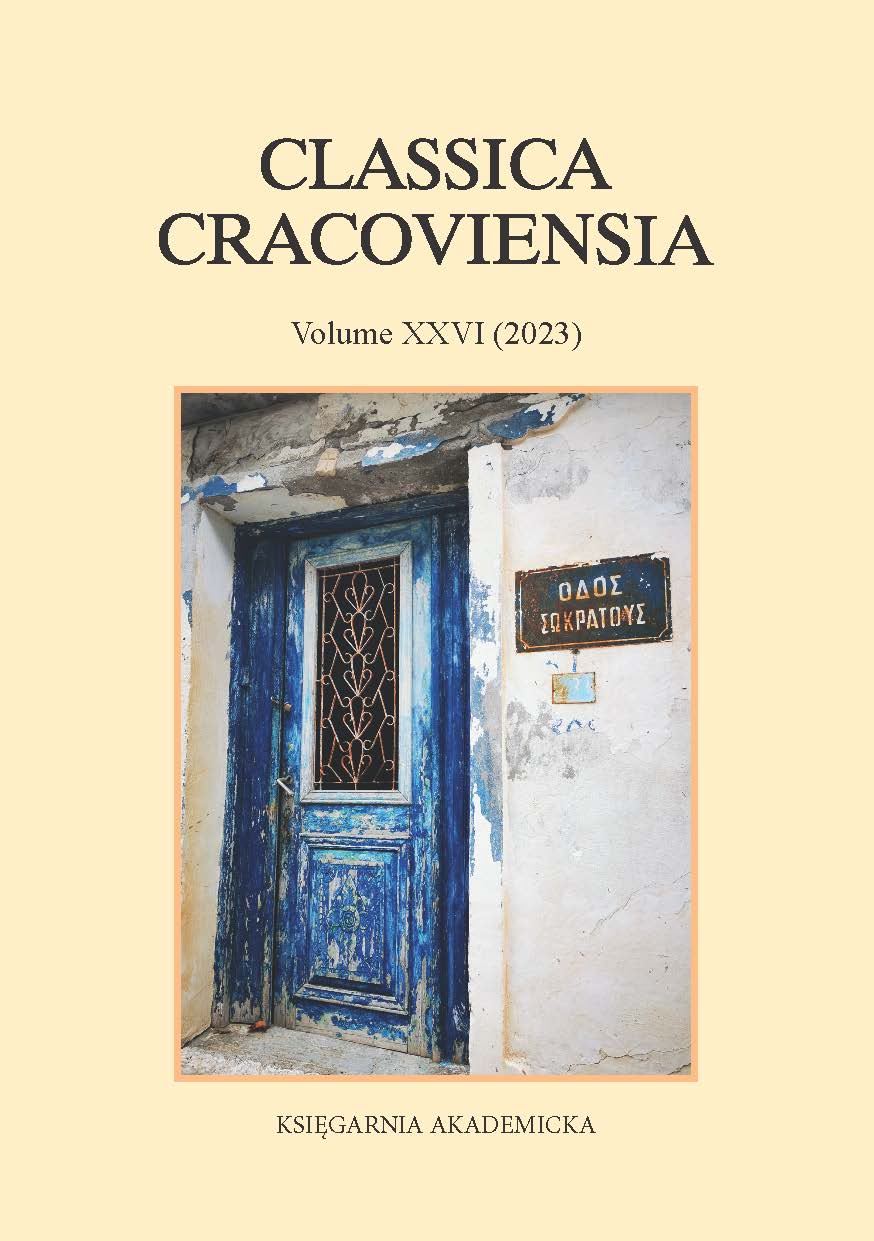
The present article investigates the problem of the etymology and development of the Latin word vir, ‘man,’ usually assumed to have descended from the Proto-Indo-European form *u ̯ ih1-ró-, ‘man’, but with somewhat irregular and not commonly accepted pretonic shortening of thevowel in view of the cognates in Indo-Iranian and Baltic. The short eningis usually explained as an effect of Dybo’s Rule, but it is pointed out that there might be a simpler solution to explaining the change, namely, the so-called Osthoff’s law, which occurred in the prehistory and history of Latinat least three times.
More...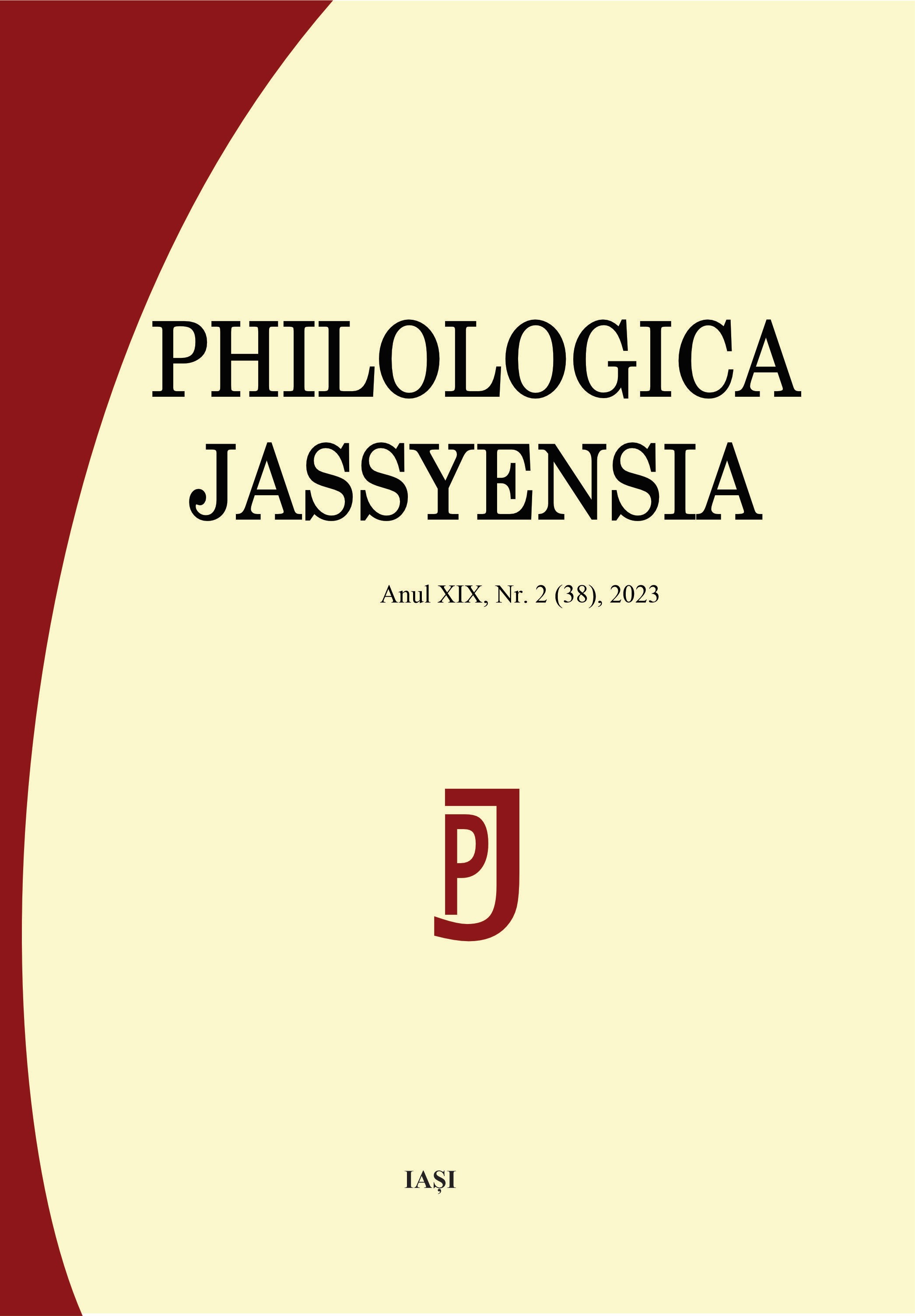
Indicating the person who provides a researcher with information about the reality of a rural/traditional community, the word informator (informant) lost its “innocent” character when it started to be used for the collaborators of the secret services, especially of the Romanian political police during the communist period, the Securitate. The authors follow the “biography” of this word in Romanian language and of this concept in Romanian ethnology. They also explore the evolution of the term according to political contexts (especially in communist Romania and the post-socialist years).The paper focuses on two aspects: (a) the evolution of the meaning of the word informator, as it can be found in the main dictionaries; the influence of the political context on the transformation of the term is also studied; (b) who and in which contexts has defined, conceptualized or mentioned the informator (informant) as an essential part of the process of knowledge of folkloric realities, within the Romanian ethnology.
More...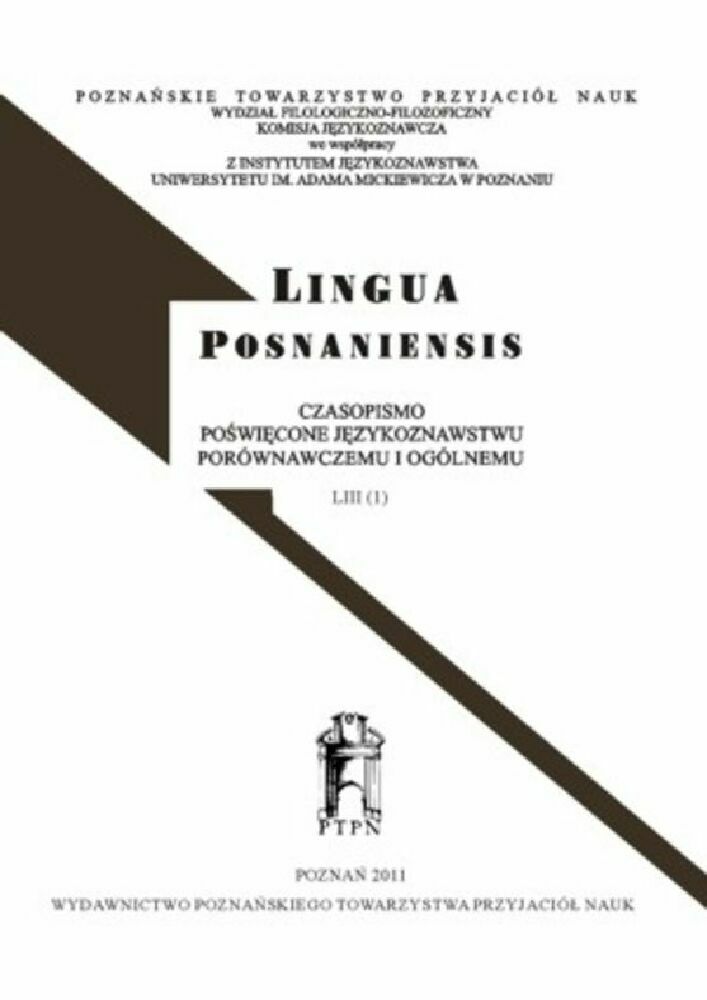
The paper as part of a long-running series is devoted to the etymological analysis of a new segment (namely that with initial dental *d-) of the Angas-Sura root stock, a small group of modern languages remotely and ultimately akin to pharaonic Egyptian and the well-known Semitic languages or Twareg in the Sahara etc. Doing so, I wish to continue the noble tradition initiated by J.H. Greenberg (1958), the founding father of modern Afro-Asiatic comparative linguistics (along with I.M. Diakonoff), who was the first scholar ever to have established by Neo-Grammarian the methods regular consonantal correspondences between Angas-Sura (AS) and ancient Egyptian in his pioneering (painfully isolated) paper on the ancient trichotomy of the word-initial labials in both branches. Nowadays our chances in following this path are substantially more favourable being equipped with our gigantic comparative root catalogue system of the Egyptian etymologies ever published (ongoing since 1994) and of the Afro-Asiatic parental lexical stock (ongoing since 1999). This series of papers represents the author’s ongoing project for an etymological dictionary of the Angas-Sura languages comprising their entire Afro-Asiatic cognacy.
More...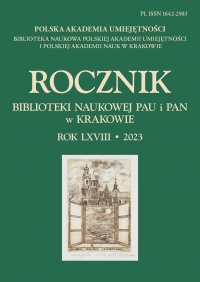
Based on Jean-François Champollion’s letter to his brother Jacques-Joseph Champollion-Figeac dated 28 August 1828, his stay of a few weeks in Alexandria beginning with the arrival of the corvette Églée is discussed. J.-F. Champollion was in charge of a Franco-Tuscan expedition heading for Cairo and further up the Nile to the region of the Second Cataract. In his letter Champollion devoted much attention to the description of Alexandria and the monuments he saw: Pompey’s Pillar and two obelisks known as Cleopatra’s Needles. He also reported on an audience with the Viceroy of Egypt, Muhammad Ali. The letter in question (along with two others) was published in an anon- ymous translation in Volume VIII of „Dziennik Wileński” in 1829 (one year after the original publication in French).
More...
The onomatopoetically derived stems *pakka- and *paka- trace back to ancient times, originally signifying actions like breaking and splitting along with the associated sounds. Over time, the concept of colour became syncretically intertwined with these meanings. Derivatives formed by adding suffixes to the root *pakka- include the Finnish pakkunen ‘three-lobe beggarticks (Bidens tripartitus)’, the Olonetsian pakkuinen ‘yellow’, the Vepsian pakuine ‘yellow’, and the Hungarian fakó (< *pak-) ‘greyish; faded; cream-coloured (about a horse)’. These terms share the common thread of ‘yellow’. The stem *paka- contributed to the Finnic names for alder buckthorn (Frangula alnus or Rhamnus frangula), such as the Estonian paakspuu, the Finnish paatsama, the Vepsian pagač, and others, along with the Estonian pagu ‘feldspar’ and paat(jas) ‘pale or greyish yellow’.In ancient times, the rock paintings of South-Eastern Finland used paint made from buckthorn, in addition to ochre, to achieve the so-called macro-red tones. The association of the colour yellow with wood, feldspar, or another significant coloured rock in the prehistorical times is plausible. Both the wood and the stone derive their names from their good splitting properties. Unfortunately, there is no information about the term’s prevalence outside the Estonian language. The disappearance of this term is likely linked to the diminishing significance of the material in economic, aesthetic and/or religious contexts.In general, the study suggests a partially parallel semantic development of similar words in sound composition. In Finno-Ugric languages, the evolution of *pakka ~ *paka progressed from ‘break, burst’ → ‘split tree/wood or stone/rock’ → ‘split, brittle coloured wood or easily split [= ‘alder buckthorn’], brittle coloured stone/rock [= feldspar]’ → ‘yellow’. The point at which syncretism appeared remains unclear, considering the intertwining with the meaning of another stem, as well as semantic shifts due to diverse component associations. In various Indo-European languages, *sphē- ~ *sphə- has developed as follows: ‘long, flat piece of wood’ → ‘chip; brushwood; thin log’ → ‘dried wood’ → ‘split, cracked wood’ → ‘split, brittle rock [= feldspar]’ and ‘flat objects with a thinner part, mostly with a handle [= oar, spade, spoon; wedge, shoulder blade, etc.]’. The meaning ‘feldspar’ is exclusive to Germanic languages, with no progression to the taxonomic and colour concepts of wildlife.
More...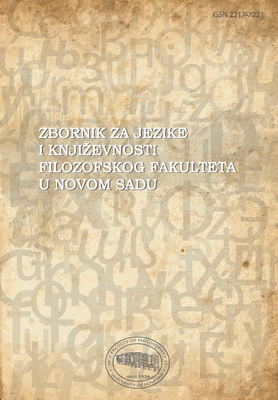
This work deals with the diachronic study of compound nouns found in the Old and Middle English texts of the Helsinki Corpus. The compound nouns of both periods are analysed, and further classified into types. The classification is based on the word class of constituent elements. The basic theoretical background on compounding is provided, with the emphasis on the difficulties of defining and classifying compounds in a straightforward way. The types of the two periods are compared and the development courses described: types which were no longer used in Middle English; types which survived, and the new ones introduced in Middle English.
More...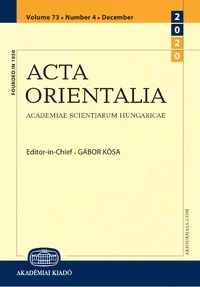
In this article I intended to further explore Jürgen Frembgen’s supposition about the late presence of the spotted hyena in South Asia with the help of available textual sources. My aim was to determine what kind of animal is meant by the word tarakṣu, which is the common Sanskrit name for the hyena.
More...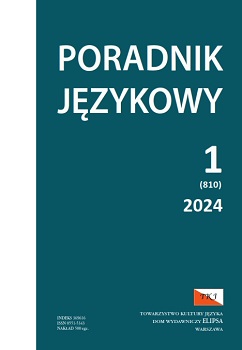
The article aims at providing a synopsis of previous studies on the Kaunas Polish language, as well as identifying knowledge gaps, i.e., the things that – despite extensive research on this language variety – are still not known. At the turn of the 20th and the 21st century, intensified research both on the current Polish language variety, as spoken in the Kaunas region, and its history (mainly over the 19th century up till the 1950s) brought about vast amounts of linguistic and extralinguistic data. However, a detailed analysis shows that there is no easy answer to the question posed in the title of the paper. The article overviews the situation of the Kaunas Polish language, its territorial range, scope, and functions, as well as its defining features observable at the beginning of the 21st century. The author also outlines how the language variety – a subdivision of the Polish in the North-Eastern Borderlands – has evolved over the 20th century.
More...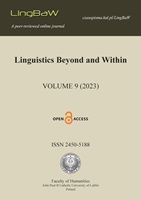
This paper examines the processes of expressive palatalization in the Basque diminutive. Basque has two forms of the diminutive, a list of inflectional suffixes and a method of palatalization with specific phonological requirements. A speaker will first palatalize any coronal sibilants in the word. If there are none, then a dental obstruent that has a palatal counterpart is the next candidate. If there are again, none, then the last candidate is a dental coronal, but only the consonant on the leftmost edge. However, if there is a sibilant and a dental consonant, only the sibilants are palatalized. If there is a dental obstruent and a dental sonorant, only the obstruent is palatalized. To describe this process, I adopt an OT approach and an autosegmental approach to determine where the [+palatal] inflection morpheme can attach. Finally, I show the application of unworking the hypocoristic formation through internal reconstruction of Basque in animal names to produce two reconstructions.
More...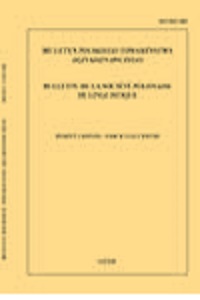
This paper is a contribution to the history of theoretical linguistics in Poland. The starting point are statements made by four Polish scholars, Jerzy Kuryłowicz, Andrzej Bogusławski, Anna Wierzbicka, and Stanisław Karolak, which have been chosen subjectively (but not randomly) and which I consider to be methodologically groundbreaking. They resulted in significant changes in research tools and thus brought about changes in the language of linguistics. These changes concern the authors themselves as well as other linguists, both their contemporaries and representatives of the next generations. The order in which I list the four names is determined by the dates of the original publications that include the statements. The statements discussed in this article were made in the second half of the 20th century; an assessment of the relevance of theoretical statements appearing in the 21st century would be premature. I do not assess the originality of the selected statements from the point of view of world science (I consider such a task unfeasible), nor do I examine their sources. The aim of the article is to point to the evolution of research tools and to draw attention to the methodological progress in Polish linguistics over the last seventy years.
More...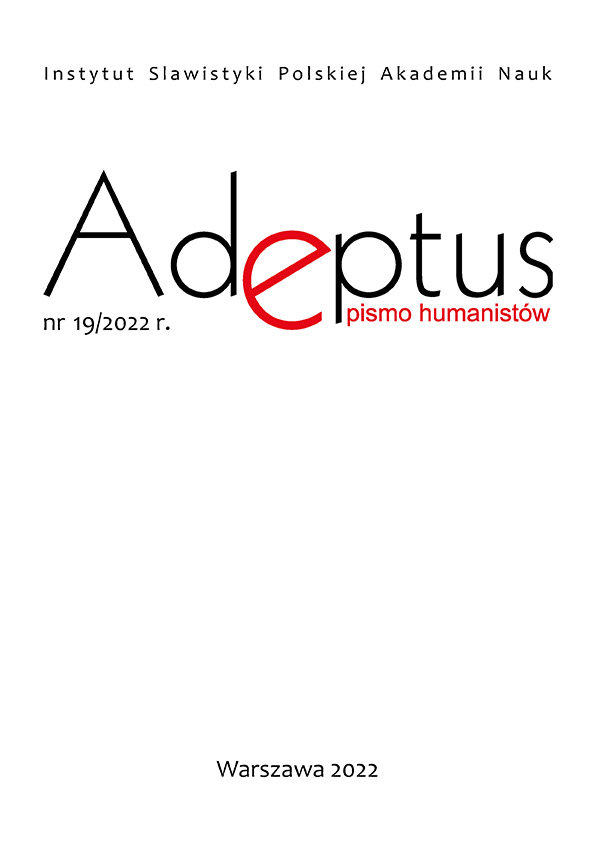
This article presents an analysis of linguistic data concerning the origins of Pomerania’s choronyms and revisits two conflicting hypotheses. One of them assumes endonymy, the other a borrowing from (Old) Polish-speaking neighbours from the south. The aim of the presented analysis is to include in the debate, so far dominated by historians and archaeologists, linguistic data from Kashubian, Polish and Polabian, as well as to propose a possible solution to this question.
More...
This article provides an insight into the complex issue of producing the first edition of the dictionary of Valoc’ – a variety of Lombard spoken in Val Masino, lower Valtellina (northern Italy). This new lexicographic project was initiated in 2017 and is called Vocabolär del Valoc’ de la Val Mäśen – VVV [Vocabulary of Valoc’ of Val Masino]. Our research team works on the material of an unpublished dictionary based on interviews collected in the 1960s and 1970s. Our methodological approach is both that of dialectology and sociolinguistics as we complement our study with observations and interviews among Valoc’ speakers of different ages, genders and occupations, to see how it is still used today. Moreover, our approach allowed us to observe the process of the transmission of Valoc’ from one generation to another as well as some discourses among speakers on its uses. In conclusion, this contribution brings us to reflect on how the new “global” society may influence the process of transmission of this endangered language which needs to be revitalised. Interventions at primary and secondary school have been offered in order to introduce Valoc’ as a language of everyday communication and not only as the “dialect” of pupils’ grandparents. We examine the importance of developing a dictionary in order to promote a norm of reference in writing as a way to preserve Valoc’ for the future.
More...
The question of authenticity in language has been approached from a number of theoretical standpoints. A significant type of feature which may bestow authenticity and legitimacy is the linguistic. Linguistic performance can be viewed in terms of either the unreflectingly fluent and competent use by the ideal native speaker or, in opposition, the inauthenticity of the non-native language learner. As pointed out by Martin Gill in his paper “Exclusive Boundaries, Contested Claims: Authenticity, Language and Ideology”, authentic speech is romanticised as “native, spoken, verbatim, unrehearsed, off-the-record, sincere, vernacular and non-standard”. Such a definition is easily understandable by the wider public outside of academia. However, it begs the question: who has the authority to make this distinction and who can validate these authenticity claims? Mary Bucholtz proposes instead the concept of authentication, or the outcome of constantly negotiated social and linguistic practices. Debates over what constitutes ‘authentic’ language in minority language settings are particularly noticeable, given the processes of revitalisation many of them are going through. This paper aims to move the discussion away from the purely linguistic when considering what authenticity means, and investigate the concept from a more speaker-centred perspective. The example of Breton in Brittany is taken as the case study here – what it means to speak Breton ‘authentically’, according to whom, and to which norms. In particular, attention is paid to the authentication process of negotiation and how different actors approach and manage this dynamic.
More...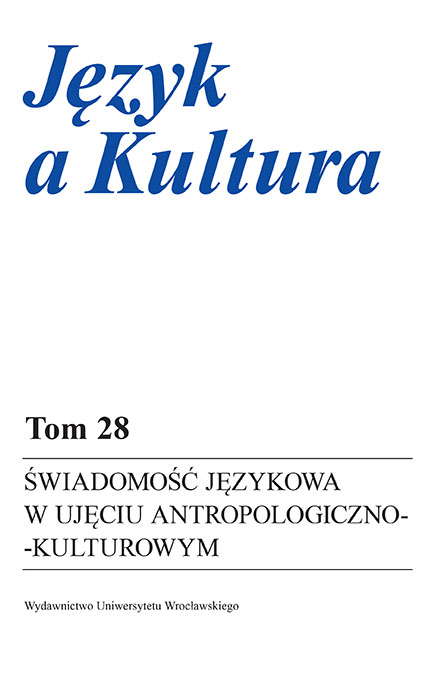
Persuasion as a rhetorical action is the basic indicator of parliamentary speech. Therefore, itseems reasonable to ask whether the diarists describing the course of Sejm proceedings were awareof the use of persuasive acts of speech by MPs. The material analysed — 24 lexemes referring to theverbal acts of the speakers — was extracted from a dozen or so Sejm diaries documenting the pro-ceedings in the Middle Polish period. The research has proven that diarists use verba dicendi, whichindicate the result of a verbal act (e.g. namawiać, zagrzewać, pobudzać, obmawiać, napominać andanimować) or that they pay attention to the persuasion process itself (e.g. dowodzić, emundowaćsię, perswadować, wywodzić, konwinkować, allegować, okazować and remonstrować). In addition,the following nouns are used: dowód, wywód, komparacyja, argument, perswazyja, konkluzyja andracyja. Diarists deliberately use a variety of lexis because they strive to name the verbal acts of thespeakers as precisely as possible.
More...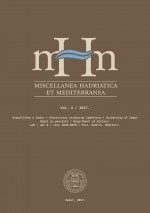
Dugi otok is the only large inhabited Adriatic island with a name composed of two words, with a Croatian name and with a noun island (Croat. otok) in it. Almost all of the linguists and historians agree that the island was first mentioned by Constantine the Porphyrogenitus (10th cent.) as Pizych, which can nowadays be recognised in place names Čuh and Čuh Polje on Dugi otok near Proversa. By the disappearance of that settlement the name was forgotten, but none of the names of newly founded settlements did not become the nesonym, as frequently occurred elsewhere in Croatian nesonymy. In the archival documents and historical maps the island is usually identified by the Romance compound word: geographical term insula/isola + determinant Magna, Maiori, Grossa, Grande, Longa. The island was named Dugi only in the latter half of the 19th century. Neither the nesonym Dugi otok, the ethnic Dugootočanin nor the ktetic dugootočki are used outside the official usage.
More...